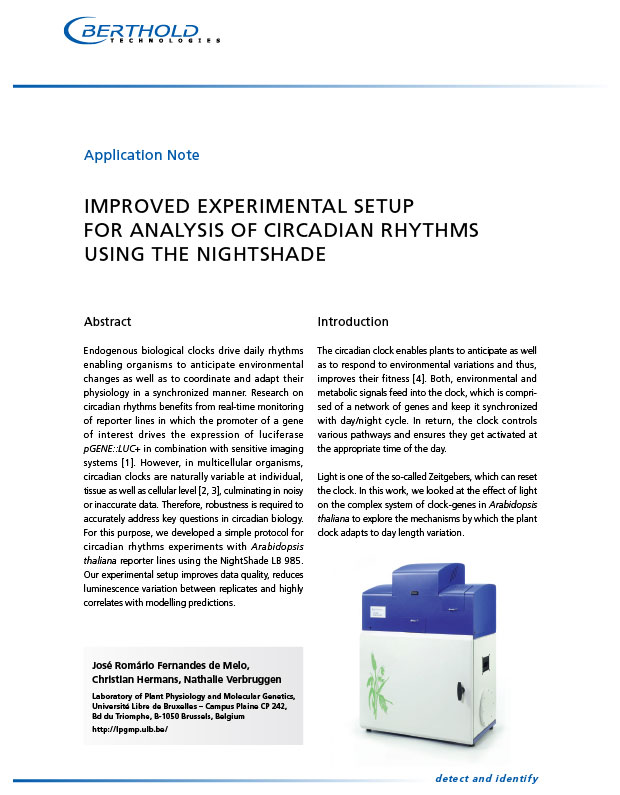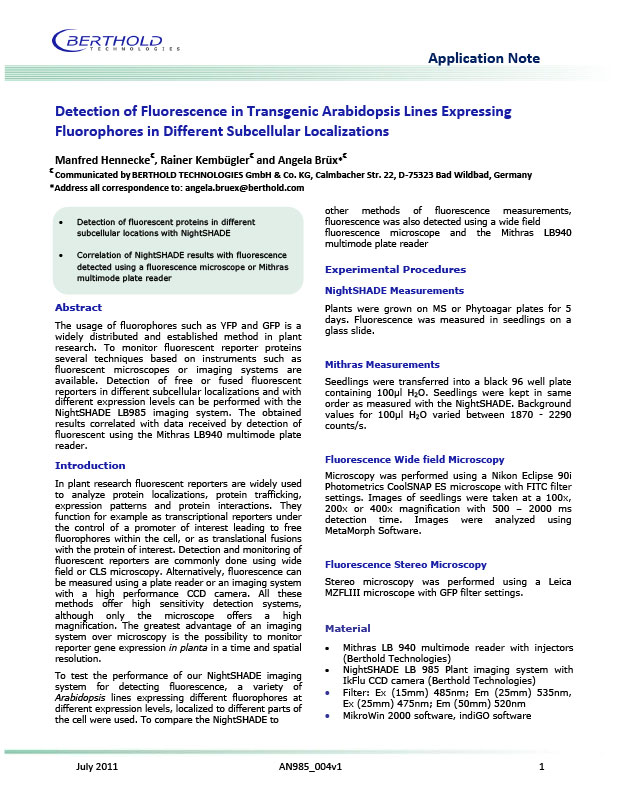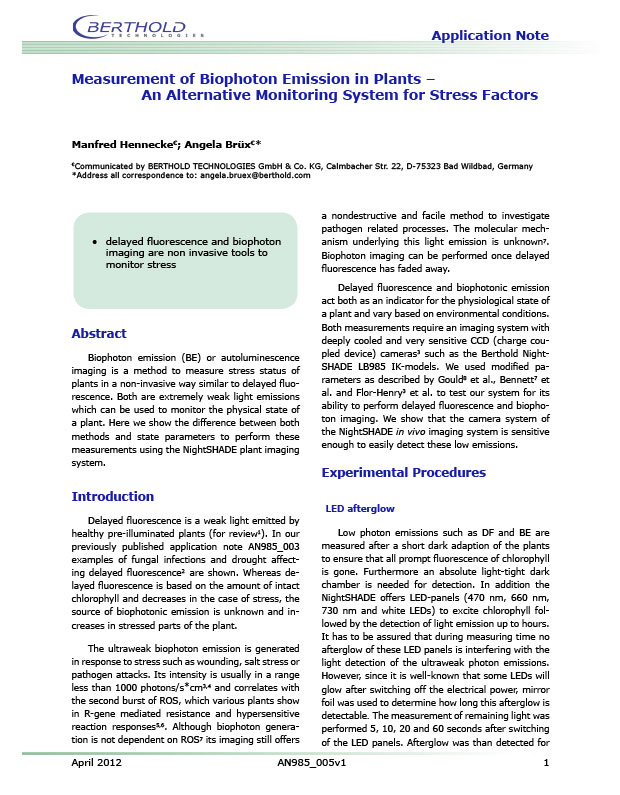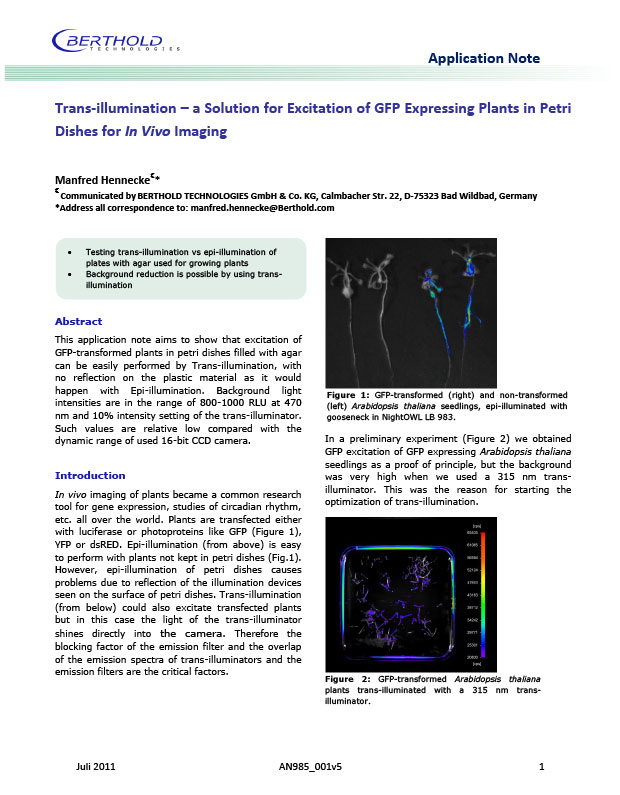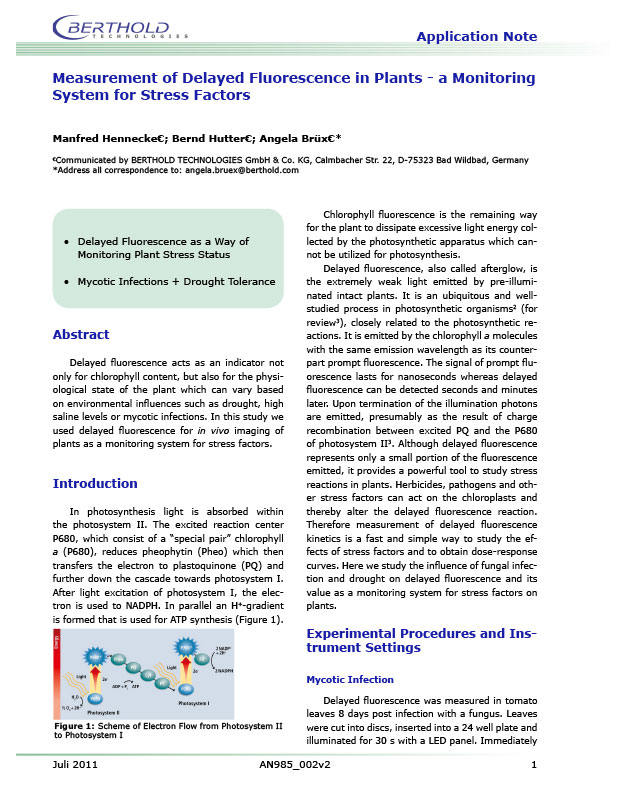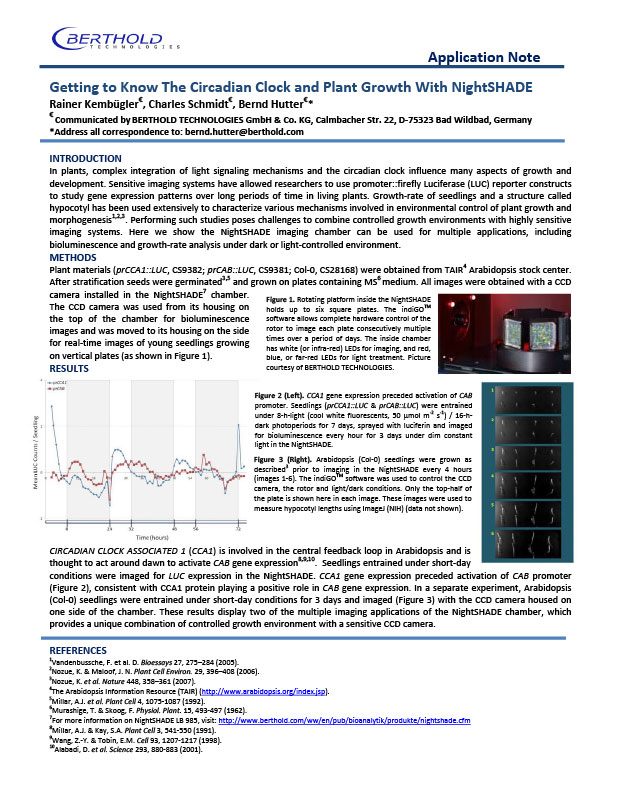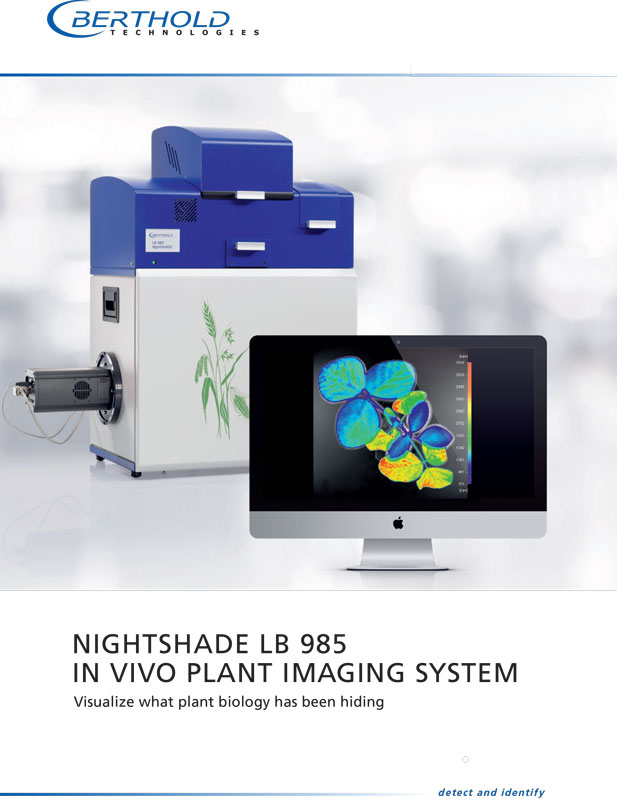
In vivo Plant Imaging System
In vivo Plant Imaging System
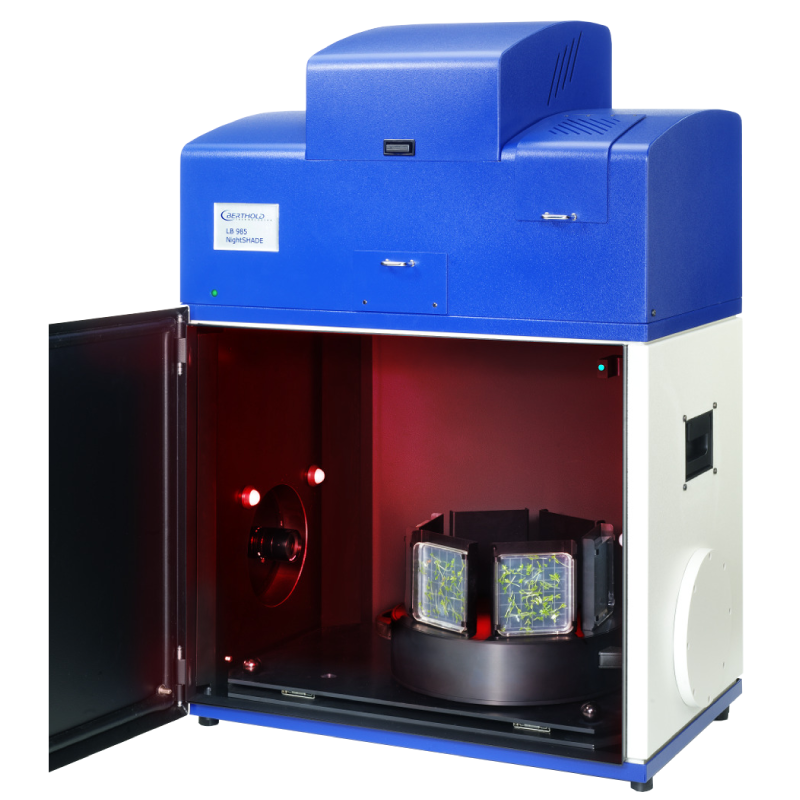
Visualize what plant biology has been hiding
Visualize what plant biology has been hiding
The NightShade LB 985 In vivo Plant Imaging System is a modular, easy to use optical imaging system dedicated to in vivo analysis of plants. It can simulate key environmental conditions like temperature or humidity, while powerful LED panels enable you to perform daylight simulation.
Equipped with an absolutely light-tight cabinet and a cooled CCD camera it enables sensitive luminescence and fluorescence monitoring in tissues, seedlings and whole plants.
The camera can be attached either to the ceiling or the side walls of the darkroom – the sample chamber – to facilitate imaging from above and from the side. The side position of the camera enables processing of multiple seedlings in parallel while growing plants vertically oriented to enable observation of the complete plant.
Furthermore, key environmental conditions like temperature or humidity as well as daylight can be simulated to provide a controlled growth environment.
Supported by easy-to-use software to help you optimize your productivity and co-optimized accessories you can configure the system to meet your research needs.
The NightShade LB 985 In vivo Plant Imaging System is a modular, easy to use optical imaging system dedicated to in vivo analysis of plants. It can simulate key environmental conditions like temperature or humidity, while powerful LED panels enable you to perform daylight simulation.
Equipped with an absolutely light-tight cabinet and a cooled CCD camera it enables sensitive luminescence and fluorescence monitoring in tissues, seedlings and whole plants.
The camera can be attached either to the ceiling or the side walls of the darkroom – the sample chamber – to facilitate imaging from above and from the side. The side position of the camera enables processing of multiple seedlings in parallel while growing plants vertically oriented to enable observation of the complete plant.
Furthermore, key environmental conditions like temperature or humidity as well as daylight can be simulated to provide a controlled growth environment.
Supported by easy-to-use software to help you optimize your productivity and co-optimized accessories you can configure the system to meet your research needs.
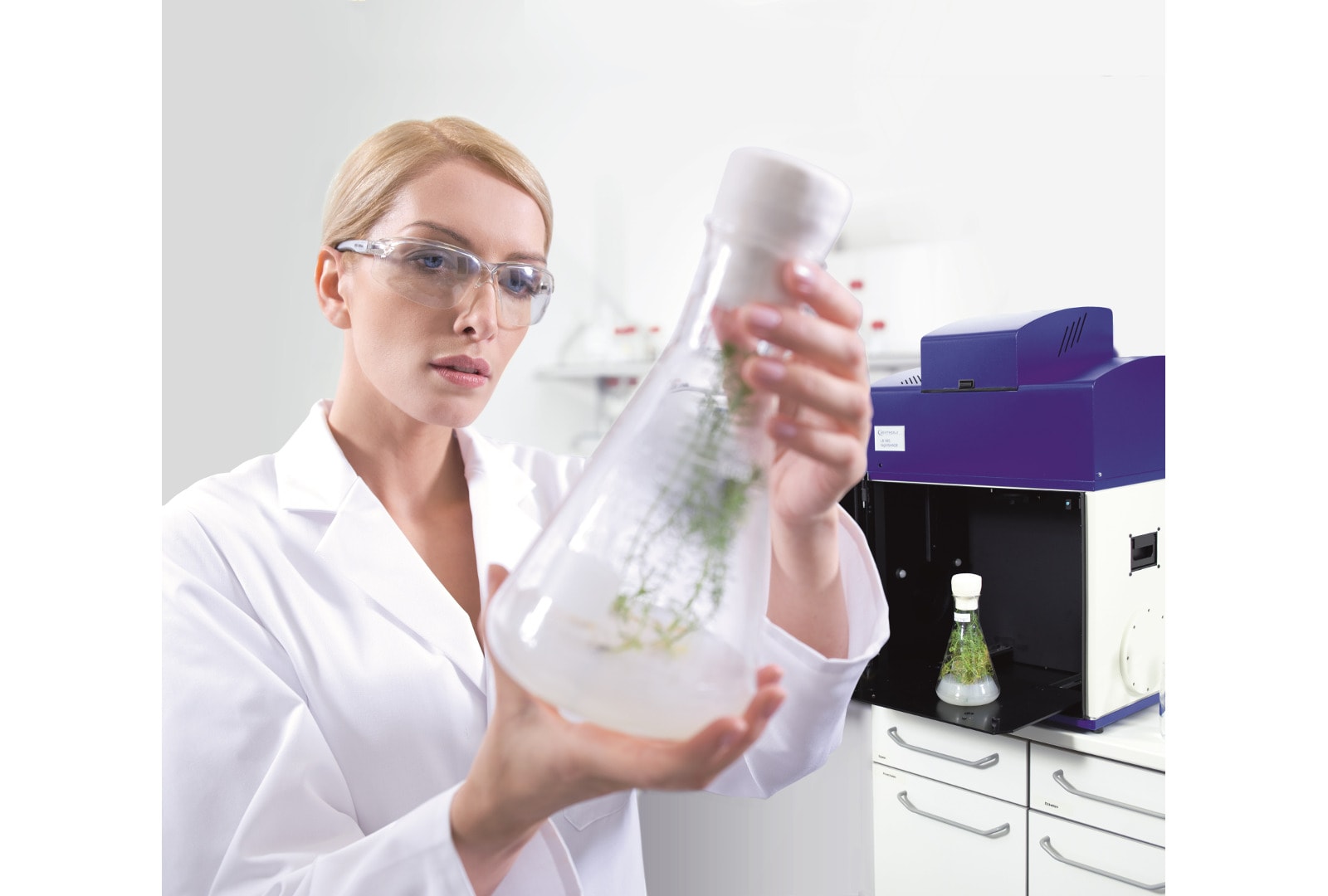
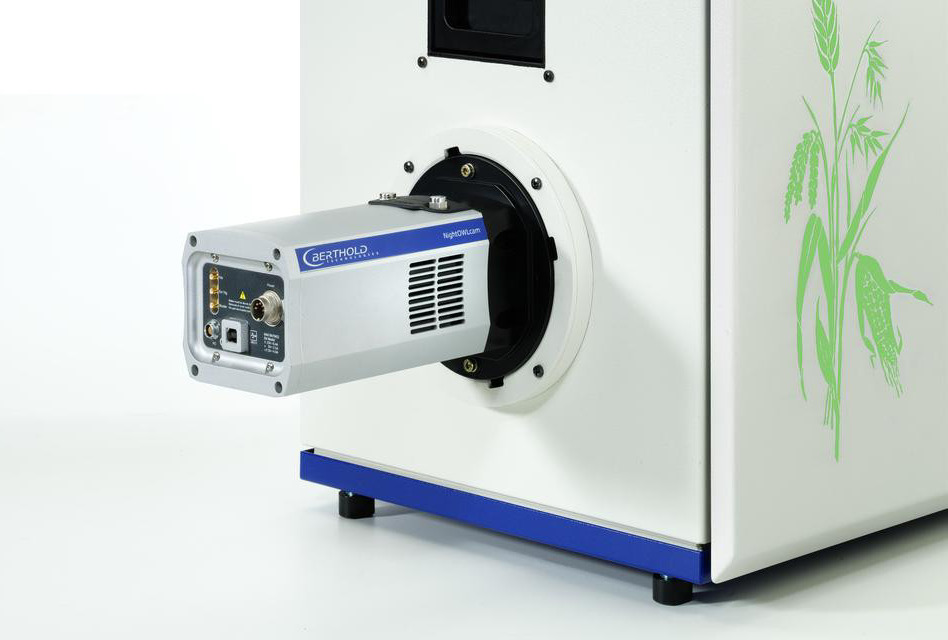

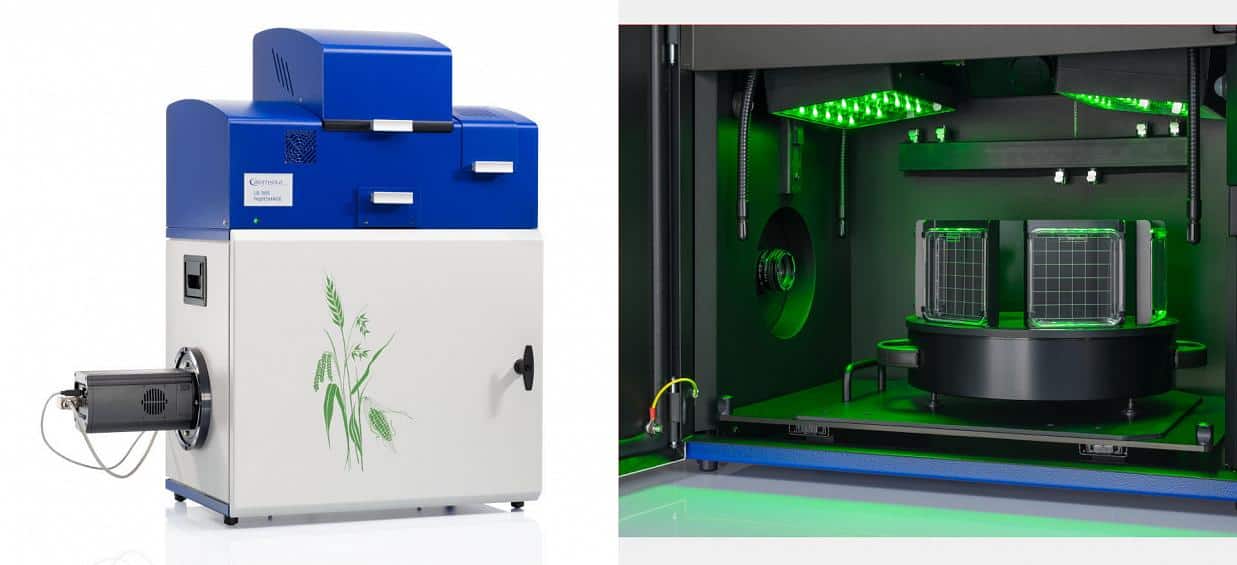
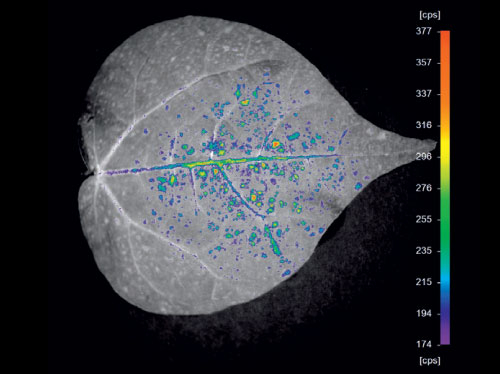
When cell biology meets physiology
When cell biology meets physiology
Measurement of prompt fluorescence of a spray pattern of umbelliferone labelled compounds on a cotton leaf, excitation filter 475 nm, emission filter 520 nm, exposure time 1 sec.
Better understanding of circadian rhythms
Better understanding of circadian rhythms

Time course study of circadian rhythms in Arabidopsis thaliana seedlings transfected with luciferase, exposure time 1 min
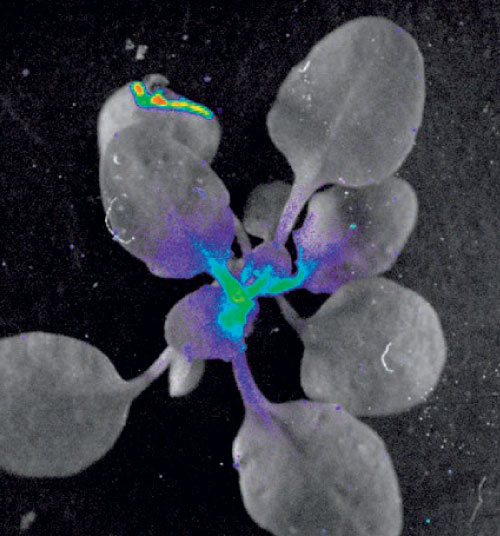
Better GFP expression study results
Better GFP expression study results
GFP-transfected Arabidopsis thaliana plant, excitation filter 475 nm, emission filter 520 nm, exposure time 20 sec, 60 mm macro lens.
Delayed fluorescence of tomato leaves after fungal infection. Well A1+A2: untreated leaves, well A3-D6: leaves infected with fungus, 8 days after infection. No delayed fluorescence is visible due to destroyed chlorophyll.
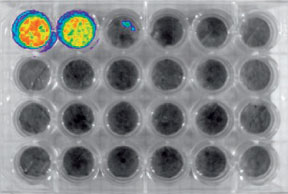
Better monitoring of stress factors
Better monitoring of stress factors
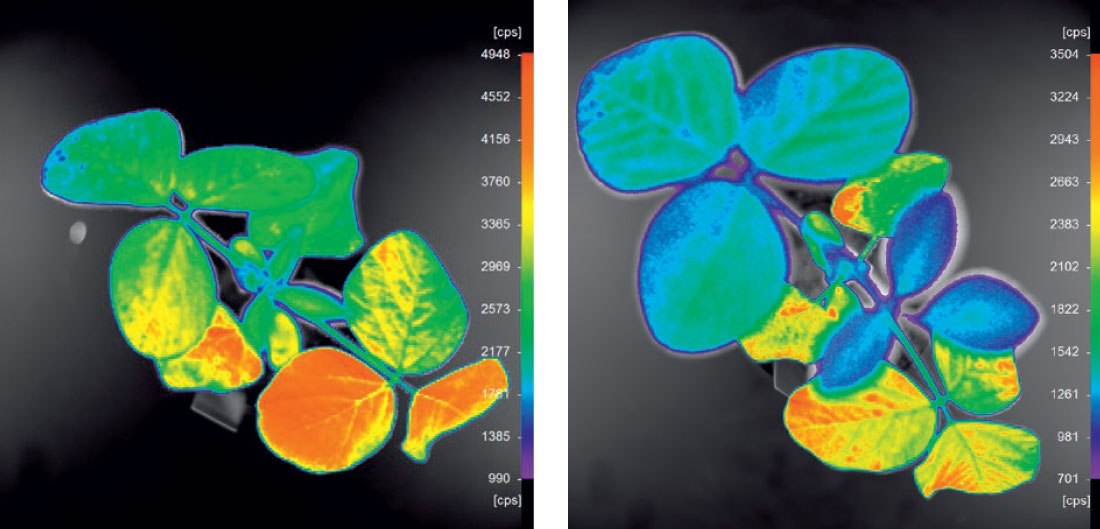
Delayed fluorescence of soybean plants after drought stress. Above Left: watered plant, Above Right: fluorescence in the same plant after 2d of drought. Red colour shows high intensities representing high chlorophyll content, blue colour shows low intensities of fluorescence, indicating low amounts of chlorophyll.
Need more information / Questions?
Need more information / Questions?
Please contact us by phone or email:
Freephone 0800 724 633
Or use the contact form below:
A to Z Product Listing
A to Z Product Listing
Copyright © 2025, Scienze. All rights reserved.
